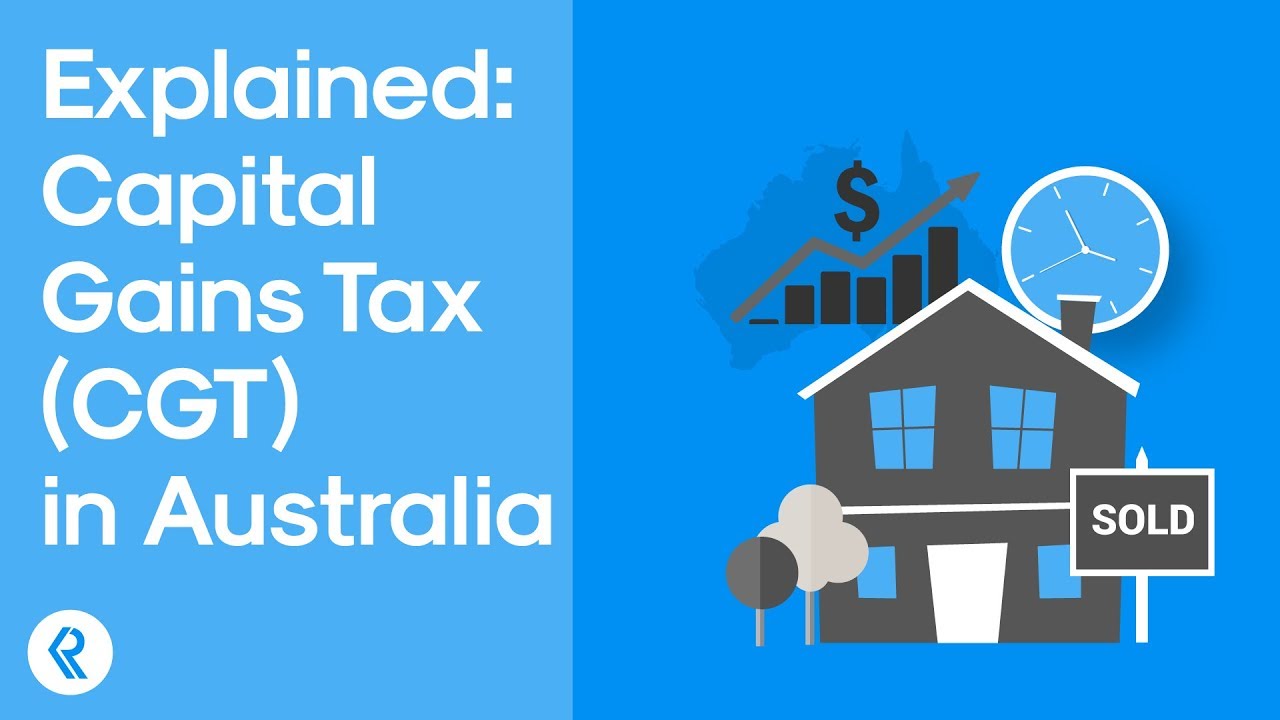Taxation: Capital gains tax is one of the main component of overall tax liability of a taxpayer. Capital gains tax arises when an asset is disposed of during the year. There are several rules for computing the overall capital gains tax, among which some of the most common ones are discussed below, with the help of a scenario.
Capital gains tax is one of the main component of overall tax liability of a taxpayer.
Capital gains tax arises when a capital asset is disposed of during the year.
Despite the fact that any gain or loss or disposal on capital asset is covered under the head of CGT, it becomes a part of taxpayer’s income tax instead of separate tax.
There are several rules for computing the overall capital gains tax, among which some of the most common ones are discussed below, with the help of a scenario.
How to compute Australian capital gains tax on disposal of residential property?
How to compute Australian capital gains tax on disposal of collectibles?
How to compute Australian capital gains tax on disposal of personal use items?
How to compute Australian capital gains tax on disposal of shares?
How to compute Australian capital gains tax on disposal of depreciating asset?
Computation of net capital gains / (losses) and the course of action in case of capital gains / (losses).
| Capital gain = Consideration received on disposal of asset – Cost base If cost base is greater than consideration received than capital loss is incurred |
CGT On Residential Property

Issue
Dave Solomon sold his two-story residence for $850,000, which was originally bought by him for $70,000.
He also received an initial deposit of $85,000 by another buyer earlier for sale at an auction, which was forfeited, as the deal could not go through. Agent commission paid amounting to $15,000.
Rule
According to guidance by ATO CGT assets and exemptions , a capital gain or capital loss arising on the person’s ‘main residence’ is exempt fully or partially from CGT, provided that the residence has not been used to generate assessable income in any tax year.
Application
Dave Solomon had been residing in the two-story property for the past 30 years and he has not derived any assessable income from the residence in any income year, the property shall be treated as his main residence and the capital gain tax shall be fully exempt from his assessable income.
| DESCRIPTION | AMOUNT IN $ |
|---|---|
| Consideration received on the disposal of residence (850,000+15,000+85,000) | 950,000 |
| Less: Cost Base | (70,000) |
| Commission Expense | (15,000) |
| Capital Gain/ (Loss) – Fully exempt for CGT purposes | 865,000 |
Conclusion
The capital gain of $865,000 arising on the disposal of immovable property, which has been used for residential purposes by Dave shall be exempt from capital gain tax.
| Points to Remember: - The residential property or home shall be treated as main residence for tax purposes if there is or has been a dwelling (to live) in it. - A vacant block of land is not considered as residential property. - Dwelling involves but is not restricted to residence by taxpayer or his family, existence of personal belongings, used as mailing address, used as address for electoral roll or having utility connections. - If a taxpayer is foreign resident at the time of CGT event than the exemption is not allowed, unless certain circumstances apply. Such circumstances have been described in 2017-18 budget which took effect from 9 May 2017. |
CGT on Collectables
Issue
Dave Solomon sold a painting by Pro Hart in order to contribute to his personal superannuation fund.
He sold the painting at an auction for $125,000, which he had purchased on 20 September, 1985 for $15,000.
Rule

The CGT applies to assets acquired on or after 20 September, 1985 CGT applicability date.
Therefore CGT shall be computed on the disposal of painting.
The collectables i.e. painting was acquired for more than $500; therefore the exemption provided to the collectible items shall have no effect.
Only capital losses from collectables can be used to reduce the capital gain from other collectibles for the current and future years.
Therefore no losses from any other CGT event can be used to reduce the below computed capital gain on the disposal of painting and whole amount shall be included in the annual assessed income of Dave Solomon.
Application:
The computation below shows that only 50% of the capital gain is admissible for the purpose of the computation of assessed income.
This is because according to Australian Income Tax Assessment Act, 1997, if any asset is held for a period of more than 12 months, the person shall be given a discount of 50% on the total amount of capital gain that arises as a result of a CGT event.
| DESCRIPTION | AMOUNT IN $ |
|---|---|
| Consideration received on the disposal of painting | 125,000 |
| Less: Cost base | (15,000) |
| Capital Gain/ (Loss) | 110,000 |
| Inadmissible CGT = 110,000*50% | (55,000) |
| Actual Capital Gain/ (Loss) | 55,000 |
Conclusion:
The capital gain of $55,000 arising on the disposal of painting shall be included in assessable income for tax purposes.
CGT On Personal Use Item

Issue
Dave Solomon sold his luxury motor cruiser that he has moored at the Manly Yacht Club to the local boat broker during the current tax year for $60,000, which was purchased by him 5 years back in 2004 for $110,000.
Rule
As the motor cruiser is classified as Dave Solomon’s personal use asset and it was not acquired for less than then $10,000, any capital gain arising from this CGT event shall not be disregarded for capital gain tax purposes $10,000 rule.
According to Income Tax Assessment Act, 1997 all capital losses arising on the disposal of personal use assets are disregarded, which means that no capital loss on the personal use assets can be used to reduce any capital gain from other personal use assets Capital losses on personal use assets.
Therefore the loss of $50,000 as computed below cannot be used to reduce the capital gain arising from the disposal of any other asset.
Application:
| DESCRIPTION | AMOUNT IN $ |
|---|---|
| Consideration received on the disposal of motor cruiser | 60,000 |
| Less: Cost base | (110,000) |
| Capital Gain/ (Loss) | (50,000) |
Conclusion:
The capital loss of $50,000 arising on the disposal of motor cruiser is to be disregarded and not to be included in determination of net capital gain or loss.
CGT on Shares

Issue
Dave Solomon sold a parcel of shares in a new mining company for $80,000 on 5 June of the current tax year, which he had bought for $75,000 on 10 January of the same tax year.
Dave had financed the purchase of shares by borrowing a loan of $70,000 on which he incurred an interest expense of $5,000.
The tax return of Dave for previous year also shows a capital loss on the disposal of shares amounting to $10,000.
Rule
According to Income Tax Assessment Act, 1997 disposal of shares in a company are treated in the same way as any other capital asset and any capital gain or loss arising on their disposal is computed in the same manner.
Application
| DESCRIPTION | AMOUNT IN $ |
|---|---|
| Consideration received on the disposal of shares | 80,000 |
| Less: Cost base | (75,000) |
| Brokerage fee | (750) |
| Stamp duty | (250) |
| Capital gain/(loss) | 4,000 |
| Capital loss of previous year carried forward | (10,000) |
| Net capital gain / (loss) on shares | (6,000) |
Conclusion
The capital loss of $6,000 arising on the disposal of parcel of shares shall be included in assessable income for tax purposes. Further no discount of 50% is provided as the holding period is less than a year.
| Points to Remember - Collectables include items such as sculptures, paintings, drawings, engravings, jewelry, artifacts, medallion and artwork. - Personal use assets refer to assets which have been held for obtaining personal utility such as wine, vehicles and boats. - Collectables and personal use assets cannot be used by, leased to, or become part of lease agreement with a related party, nor could they be stored or displayed at private residence of such related party. However personal use assets and collectibles can be sold to related parties at market price which is usually determined by independent qualified valuer. - Personal use assets and collectables can be leased only to un-related parties only at arms- length transaction. - Net capital gain refers to the total net capital gain / (loss) made on the disposal of assets by a taxpayer during the income year. |
CGT on Depreciating Asset
Issue
Dave Solomon sold a machinery which had been used by him in his business deriving assessable income.
The machinery had been purchased in January 2020 for $50,000 and was sold in December 2020 for $45,000.
At the time of sale the carrying amount (Cost less Depreciation) of machinery was $ 40,000.
Rule
Depreciating assets used for derivation of assessable income are exempt from the application of CGT principles.
However if these assets have been used for generation of non-assessable income, than the principles of CGT may apply.
Conclusion
The capital gain of $5,000 (Sale proceeds less Carrying amount) arising on the disposal of machinery, which has been used for derivation of assessable income shall be exempt from capital gain tax.
Computation Of Net Capital Gain / (loss)
| DESCRIPTION | AMOUNT IN $ |
|---|---|
| Capital gain from disposal of painting | 55,000 |
| Net capital loss from shares | (6,000) |
| Net capital gain for the current income year | 49,000 |
Dave has a net capital gain of $49,000 for the current income year which would become part of his assessable income and shall not be treated as a separate block of income. He can also contribute this amount to his superannuation fund.
Knowledge Base
- Capital gain tax property exemption tool
- Destruction or compulsory acquisition of dwelling property
- Maximum exempt area
- Dwelling and associated structures
- Land adjacent to dwelling
- Ownership interest and ownership period
- Maintenance of records for real estate
- Insurance
- Taxation Ruling TR 2010/1
- Capital Gain Tax Investment Companies Concession
- Rights and Options to Acquire Shares
- Bonus Shares
- Personal Investors’ Guide to CGT 2019

COMMENTS